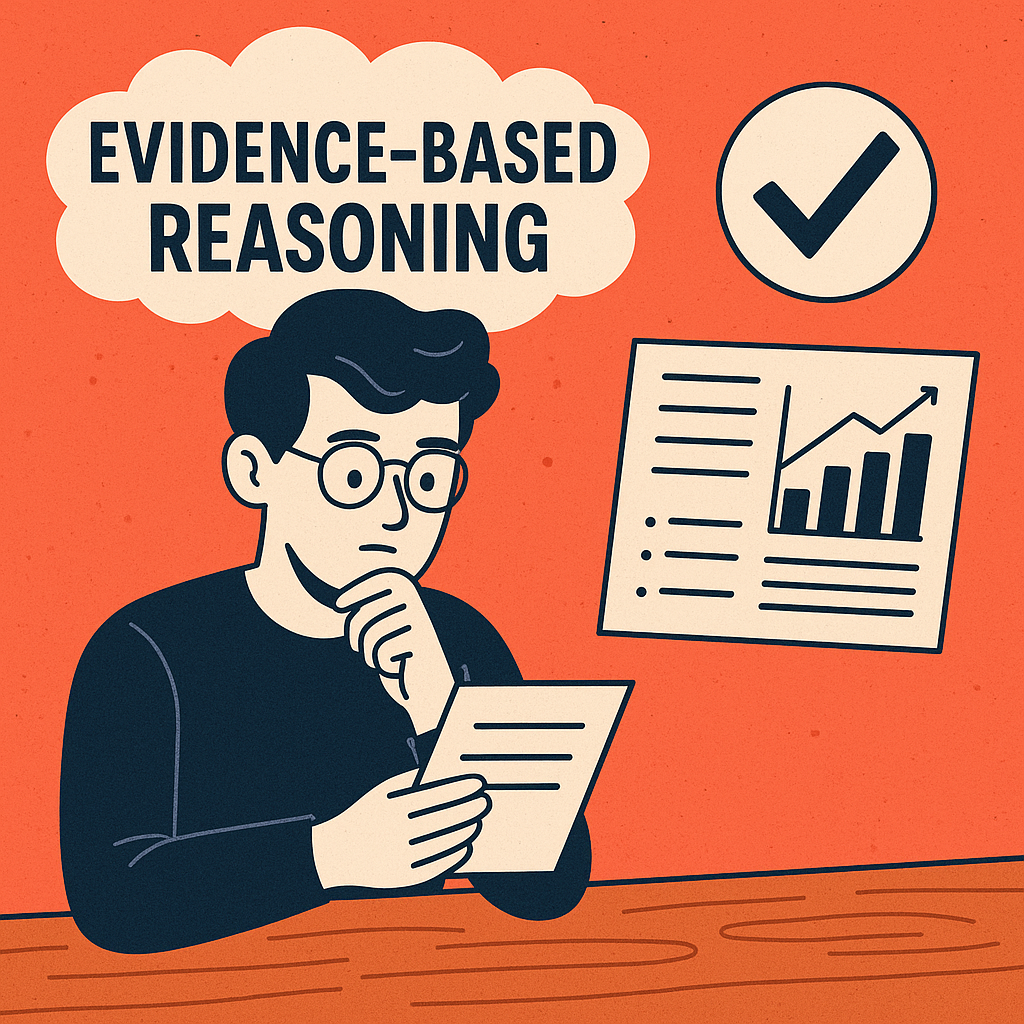Subscribe to our newsletter
Thank you! We got you!
Oops! Something went wrong. Try again!

When students prepare for the SAT Reading and Writing section, Command of Evidence questions often stand out as tricky. They ask you to determine which piece of information best supports, weakens, or illustrates a claim in a passage. These questions test how well you can reason from evidence—something that’s central not only to SAT Prep but to strong analytical thinking in college and beyond.
In the Digital SAT, Command of Evidence questions make up a major part of the Information & Ideas domain, so learning how to handle them efficiently is key to boosting your SAT Reading score.
High-scoring students don’t just read and guess—they follow a process. Here’s a simple, four-step strategy you can apply to every Command of Evidence question during your SAT study sessions:
Let’s apply these steps to a sample question:
Many species of butterflies display iridescent colors that change with viewing angles. While these colors are thought to attract mates, biologist Sarah Evans hypothesized that they might also help butterflies evade predators.
Which finding would most directly support this hypothesis?
A) Predators attacked fewer iridescent wings than non-iridescent ones.
B) Predators attacked iridescent wings more often.
C) Predators spotted green wings more easily than violet ones.
D) Some predators did not attack any wings.
Answer: A.
If predators attacked fewer iridescent wings, it supports the idea that shimmering colors make butterflies harder to see—perfectly aligning with the hypothesis. Choices B, C, and D fail to connect directly to that claim.
This example shows what Command of Evidence is all about: linking a finding to a specific idea in the text.
Some questions require you to support an idea using a quotation from literature. Students often find these challenging because literary quotes can use complex or old-fashioned language—but the same logic applies.
For example:
White Noise by Don DeLillo explores how consumerism shapes identity. Which quote best supports this idea?
B) “I shopped with reckless abandon. I shopped for immediate needs and distant contingencies…”
Answer: B.
The quote vividly illustrates obsessive consumer behavior, directly supporting the claim. When you face quotation-based Command of Evidence questions, focus on meaning first—then find the quote that connects most clearly to the claim.
Some SAT Reading questions add a visual element, such as a table, chart, or graph. The process stays the same—identify the idea first, then check the data only if multiple answers seem possible.
Here’s a tip: many wrong answers will accurately describe data from the chart but fail to relate to the claim. Always connect data back to the point you’re testing.
Example:
If the question asks which data best support the idea that fertility trends differ between countries, look for an option showing different changes over time, not just different values.
Occasionally, none of the answers will directly support or weaken the claim. In those cases, look one step deeper—into the reasoning or assumptions behind the idea.
Example:
Researchers hypothesize that “musical chills” may not depend on emotion because people reported chills even with “neutral” music. The correct answer might not directly say “emotion matters,” but instead show that emotional responses are subjective—undermining the researchers’ reasoning.
On the SAT, that kind of indirect logic often separates a good reader from a great test-taker.
Command of Evidence questions reward precision and reasoning. The best way to master them is through consistent SAT study and targeted SAT Prep practice. When reviewing your SAT Reading results, pay close attention to why each answer supports or weakens a claim.
Practice drills like those on Preppinbee’s Question Bank can help you train efficiently. With AI-predicted SAT questions, personalized study plans, and detailed explanations, you can sharpen your Command of Evidence skills before test day.
Start practicing today—smart preparation always beats memorization.